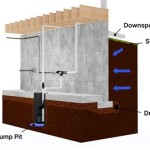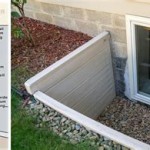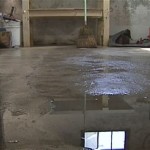How To Install French Drain In Basement
A French drain is a shallow trench filled with gravel or crushed stone, installed around the perimeter of a basement to collect and redirect groundwater away from the foundation. It can effectively prevent water from seeping into the basement and causing damage to walls, floors, and belongings. Installing a French drain in a basement requires careful planning and proper execution. Here is a step-by-step guide on how to do it:
Materials you'll need:
- Perforated drain pipe
- Gravel or crushed stone
- Landscape fabric
- Concrete mix
- Measuring tape
- Level
- Shovel
- Tamper
Step 1: Determine the Location of the Drain
Locate the areas in the basement where water tends to accumulate or where you suspect there may be moisture problems. Mark these areas on the floor using a pencil or chalk. The French drain should be installed along the perimeter of the basement, following these marked areas.
Step 2: Excavate the Trench
Using a shovel, dig a trench around the perimeter of the basement, approximately 12-18 inches wide and 6-8 inches deep. The trench should be sloped slightly towards the sump pump or the point where you want the water to be discharged.
Step 3: Install the Drain Pipe
Place the perforated drain pipe in the center of the trench, ensuring that the perforations face down. The pipe should be level and follow the slope of the trench. Connect multiple sections of pipe together using couplers.
Step 4: Cover the Pipe with Gravel
Fill the trench around the drain pipe with gravel or crushed stone, up to about 2 inches below the top of the trench. Tamp down the gravel to compact it and create a stable base for the drain.
Step 5: Wrap the Gravel with Landscape Fabric
Wrap the gravel with landscape fabric to prevent soil and debris from clogging the drain. Overlap the fabric by at least 12 inches and secure it using stakes or pins.
Step 6: Backfill the Trench
Fill the remaining space in the trench with soil or sand and tamp it down to create a level surface. If desired, you can cover the trench with concrete for a more finished look.
Step 7: Connect to Sump Pump
If you have a sump pump installed in the basement, connect the end of the French drain to the pump's discharge pipe. This will allow the water collected by the drain to be pumped out of the basement.
Maintenance
To ensure the French drain continues to function properly, it's important to perform regular maintenance:
- Inspect the drain periodically for any blockages or damage.
- Clean the drain by flushing it with water or using a wet/dry vacuum.
- Replace the landscape fabric if it becomes torn or clogged.
By following these steps and maintaining the drain properly, you can effectively prevent water from seeping into your basement and keep it dry and protected.

Basement Sump Pump French Drain Installation Basements Love Us

Is A French Drain The Solution For Wet Crawl Space Seattle Times

A Quick Guide To French Drain Basement Waterproofing

French Drain Vs Waterguard Interior Drainage System

Dealing With Basement Water From The Inside Greenbuildingadvisor

Installing French Drains In A Basement D Bug Waterproofing

French Drain Products In Greater Clearfield Contractors Altoona State College Bellefonte Du Bois Saint Marys Pa

Thin Floor French Drain System In Philadelphia Baltimore Ellicott City Pa De And Md Installation Pennsylvania Delaware Maryland

French Drain Products In Greater Clearfield Contractors Altoona State College Bellefonte Du Bois Saint Marys Pa

Basement Waterproofing Foundation Repair Company Michigan Staydry
See Also








